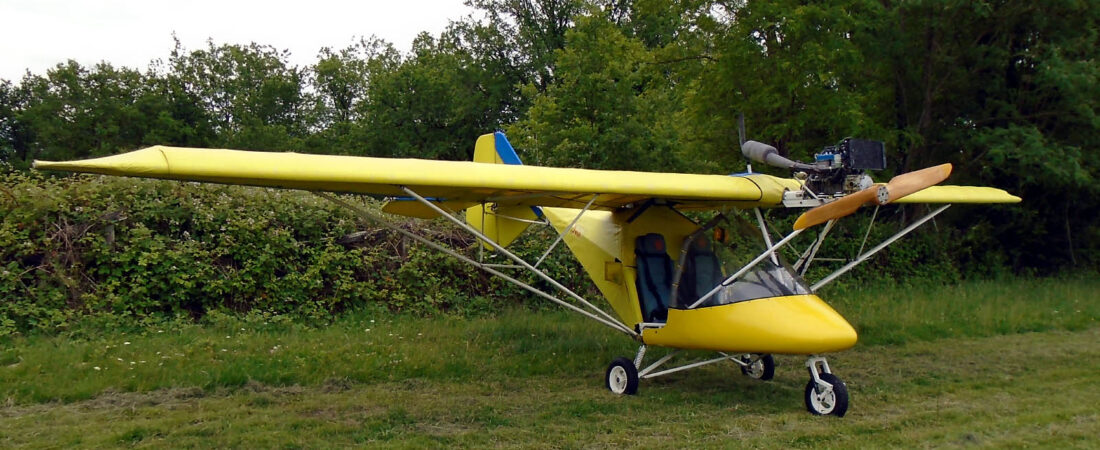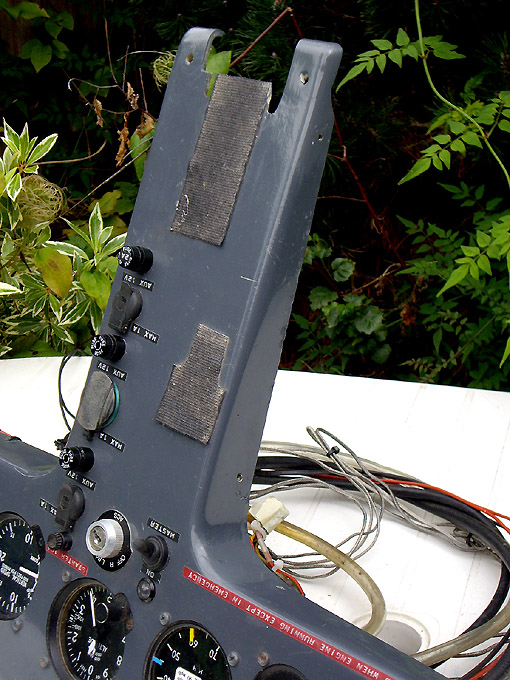The Savannah’s new instrument panel and avionics are in and the transponder has been programmed with the code that I received this morning. Let me tell you about the latter and the tortuous process that I had to go through to obtain it that would have been amusing if it hadn’t revealed such painful ineptitude.
I mentioned previously on My Trike that in anticipation of the French habit of making what should be a simple process unnecessarily complex as a result of their love of bureaucracy, I’d sent off my application for a 24-bit transponder code well before the time that I’d actually need it. However, despite now having 7 years worth of experience, I still managed to underestimate the unique capability that French bureacrats have to complicate things.
Not unexpectedly, my letter and paperwork disappeared into a black hole at the OSAC, the organisation to whom the DGAC has delegated the issue of codes, so last week-end I found an email address for the organisation and sent off a message with copies of the paperwork and a comment that the matter was now urgent. But apparently nobody in this august organisation checks either letters or emails, so my missive again went unanswered.
Until this morning when I phoned them up and apprised them of the situation. This must be quite normal for them because the lady on the other end of the phone gave no obvious reaction and said that if I dialled another number I could speak with her colleague responsible for issuing codes directly. So I did.
The very pleasant young lady who I then spoke with asked me to email copies of my paperwork yet again and promised to send me my code ‘by return’, so I did and then waited. That was after we’d spent several minutes with me trying to take down her email address. She had a long Greek surname and no knowledge of the phonetic alphabet, so she was telling me things like ‘I for Isabel’. I still can’t decipher what ‘T’ was for, and there were quite a few of them in her name, but sure as heck it wasn’t ‘Tango’.
After several minutes I got an email back, but not one that contained a transponder code. It merely said that as my aircraft is an ULM, they couldn’t help and that I had to go to the DGAC direct. It left me wondering why it had taken 6 weeks or so to discover that when they’d been sitting on my application all that time? And why the heck couldn’t she just ask the simple question this morning, while we were speaking?
I find it astonishing that an organisation responsible for a key task that presumably they know well and do every day can’t recognise when a ‘faulty’ application is received that they then refer straight back to the applicant with pre-printed advice on what to do next. It’s understandable perhaps when a letter and stamp are involved, but not when a simple question during a conversation would settle the matter. You find this time and time again in France, it’s maddening and the conclusion that you have to come to is that they just can’t be bothered. Very sad.
And so began lap two, starting with a phone call to the DGAC at Merignac and now the game got tougher because instead of a person answering the phone, you just get a recorded voice giving you a list of new numbers to phone with no indication whatsoever as to what each number covers. So having a choice of Drone/ULM Licencing, Safety and Navigation, I decided to go for Safety.
Bad choice because all I got was a message service. OK, How about Navigation then? Good one, this time a real voice answered. I told the lady what I was phoning about and she said OK, I really need to phone Safety. I told her that I already had and had just got a message service, which wasn’t a lot of use to me. She said to phone again and probably tipped off her colleague across from her in the same room, so when I did this time I got an answer.
But not the one I wanted. She told me she couldn’t help and to phone ULMs, but not the number given in the main menu when I first phoned. By this time I was beginning to lose the will to live, but took down the number that she read out, very badly and very unclearly, repeated it back twice and then rang it. Good news, another female voice answered but I sensed a note of hesitancy in it, so I asked if this was the ULM service of the DGAC. It wasn’t. It was a wrong number.
You have to wonder how such a simple, well defined process, like applying for a transponder code using paperwork downloaded from the official web site can be turned into such a cock-up, but I have to say that the French, lovely people that they are, do have a special talent for such things. Remember how it took me over a month to obtain my French driving licence, not to mention the problems that I had registering my Ford C-Max in my name on line.
And the heated argument that I had with the local tax man who had the cheek to dip into my bank account without my knowledge all because he had used my old UK address that I’d left to move to France and from which he’d naturally received no reply and it hadn’t occurred to him to try contacting me at the address that I’d just bought and moved into in France. And the list goes on, but I digress.
So what to do? The clue was in the words ‘ULM service of the DGAC’ which I googled and got yet another web link to, together with yet another telephone number. But this time I hit the jackpot – it had only taken me about three hours so far. Yes, they said, they issue transponder codes for ULMs (if only they’d made this information freely available on the web site where I’d downloaded the application form it could have saved me an awful lot of time and anguish) and could I just send them over the form that I’d filled out.
Within ten minutes or so, Olivia at the DGAC had replied with my transponder code plus a request for a bundle of other paperwork that I will only be able to return once my new system has been signed off by the relevant avionics test organisation, mine being at La Rochelle. So this afternoon I programmed the transponder, checked the Savannah’s plugs and got it ready to fly again at long last. Now all I need to do is give it a really good clean and, if the radio checks out while in the air, which it should do of course, arrange an appointment to get the system tested and signed off.
By golly, it’s been a long and winding road and a tortuous process. You have to ask yourself, why not put the application process on line under headings like ‘Commercial’, ‘General Aviation’ and ‘ULM’ with each section containing all of the links necessary for the relevant paperwork and the necessary contacts. Far too simple, one must assume, plus if you make it too straightforward you’d be putting people out of jobs. Can’t have that, even if it would benefit the victims… err, sorry, clients.








































































